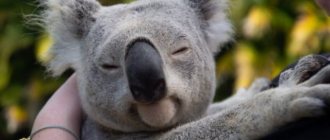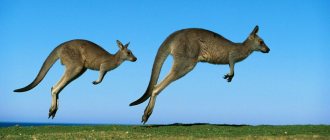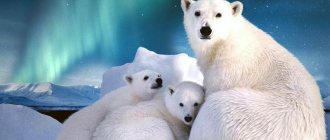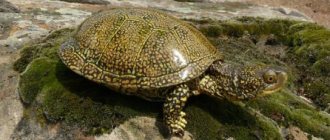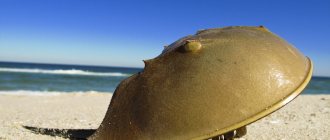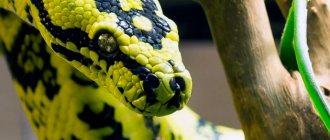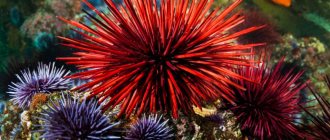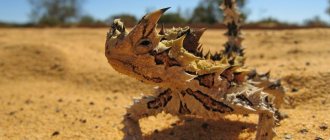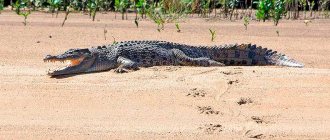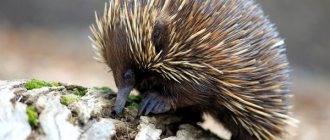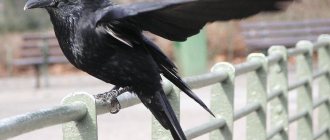The largest island of Oceania is often called the fifth continent. Its fauna is unique. In Australia there are no ruminants, pachyderm mammals, or monkeys. Most of the fauna of this country are marsupials. Their abdomens have deep folds of skin called bursae. And the cubs of these animals are born very tiny - their body length does not exceed 1.5 cm. These babies are born hairless and blind. They are completely helpless and have no ability to live independently. Immediately after birth, they climb into their mother's pouch, where they feel great.
The state of Australia does not have a single animal or bird that would be declared a symbol of the country. The country has an official flower. This is Golden Acacia. And there is even a stone (opal).
Wombat
Australian animals, whose names sound unusual to us, are all very different. Our first hero is a clumsy animal covered with coarse fur. Its body is about a meter long, its legs and tail are short. The wombat is leisurely, which is explained by its slow metabolism. But if necessary, he can run at speeds of up to 40 km/h.
And judging by its habits, this creature is something between a bear, a badger and a pig. Wombats are not at all afraid of humans, so in their homeland they often become pets.
Koala
This is an Australian marsupial. Outwardly, it very much resembles a bear cub. This small animal, whose weight does not exceed fifteen kilograms, spends most of its life in trees and very rarely descends to the ground. The koala's paws have sharp claws that help him deftly climb tree trunks. The animal's fur is dark gray on its back and light on its belly. Every day, a koala eats more than one kilogram of eucalyptus leaves. The animal chooses only old foliage for food. Interestingly, koala fur does not harbor parasites, probably because it smells strongly of eucalyptus.
Mammals
Australian echidna
The Australian echidna is one of four living species of echidna and the only member of the genus Tachyglossus. Her body is covered with fur and thorns. The echidna has an elongated snout and a specialized tongue that it uses to catch insects at high speed. Like other modern monotremes, the Australian echidna lays eggs; monotremes are the only group of mammals that are born in this way.
The Australian echidna has extremely strong forelimbs and claws that allow it to quickly burrow underground. Their spines do not serve as weapons, but they can scare away predators. The echidna can swim if necessary.
Asian buffalo
The Asiatic buffalo appeared in Australia in the 19th century and spread throughout the northern part of the continent. These are large animals that prefer to live near bodies of water where the water is standing or with a slow flow. These are herbivores; aquatic plants make up up to 70% of their diet. The horns of males are larger than those of females and are up to 2 m long. Buffaloes can reach about 2 meters at the withers, 3 meters in length and weigh 1200 kg. These introduced animals have become so well adapted to the Australian environment that they are causing significant damage to the local ecosystem. The lifespan of the Asian buffalo is about 25 years.
Camel
Camels were introduced to Australia in the 19th century and adapted well to its climatic conditions. At the moment, the camel population is more than 50 thousand individuals.
The average lifespan of a camel ranges from 40 to 50 years. Adults reach a height of 1.85 meters at the withers, and 2.15 meters at the hump. Camels can reach speeds of up to 65 km/h. Their humps are filled with fatty tissue, which is distributed throughout the body and helps the animal survive in hot climates. These animals have a number of physiological adaptations that allow them to survive without water for long periods of time.
Of the two camel species, Australia is home to the dromedary or dromedary camel.
Dingo
The dingo is an Australian wild dog. It is the largest carnivore in Australia. It is called a wild dog, but it is a semi-domesticated animal from South Asia, a subspecies of the gray wolf. There is some controversy as to whether the dingo is native to the continent or not. The reason may be that, unlike other Australian animals that have existed on the continent for millions of years, the dingo arrived in Australia about 4,000 years ago.
Although they were domesticated from time to time by Australian Aborigines, dingoes remained wild animals. The height at the withers is about 60 cm, and the weight is up to 25 kg. They have a stronger skull with larger teeth than domesticated dogs. The color of the coat depends on the habitat and varies from red to white. Dingoes usually live on their own or in a small family group. It eats almost anything it can find, from kangaroos and wallabies to rats, mice, frogs, lizards and even fruit. The dingo does not bark, it squeals and howls like a wolf, especially at night, to communicate and defend its territory. Dingoes can live in any part of Australia, provided there is access to drinking water.
Kangaroo
The largest representative of the kangaroo family can reach a weight of about 90 kg and a body length of 1.3 meters. They have short fur that varies from orange-brown to gray or dark brown. Sexual dimorphism is pronounced, males are larger than females. As marsupials, females have a pouch on their abdomen in which they carry their young. The most distinctive feature of kangaroos is their upright body position, thanks to two disproportionately large hind limbs, small forelimbs and a large, thick tail. Kangaroos can live from 6 to 27 years. Surprisingly, these marsupials spend most of their lives in dry, arid areas, but are also good swimmers. Kangaroos live and move in small social groups.
The quokka is one of the smallest representatives of the kangaroo family. They have: thick and tough gray-brown fur; short, round and fluffy ears; long tail (24-31 cm); shorter hind limbs than other kangaroos. The body weight is 2.7-4.2 kg and the body length is 40-54 cm. They are herbivores and feed on grass, leaves, bark and various plants.
Koala
The koala is a plush, stocky, herbivorous animal that lives in the crowns of eucalyptus trees. Koalas have gray fur, a large black nose and large fluffy ears. With the help of sharp claws, she clings to branches. This animal spends almost its entire life in trees and descends to the ground to move from one tree to another.
The diet consists mainly of eucalyptus leaves. These leaves are highly poisonous, difficult to digest, and have very little nutritional content for most other animals. The koala gets all the moisture it needs from the leaves and rarely drinks water.
Flying foxes
Flying foxes have very thin skin on their wings, thanks to which they are able to fly. They hunt insects at night and use their ears as radar to find their prey. When resting, these mammals lie upside down and wrap their wings around their body. Any place where it is warm and humid is suitable for relaxation.
The flying fox is one of two placental mammals found in Australia. They migrated to the continent from neighboring islands.
Nambat
The nambat or marsupial anteater is a small marsupial mammal. These are territorial and solitary animals that are active only during daylight hours.
The marsupial anteater weighs from 400 to 700 grams and has a body length of 20-27 cm. It has a reddish-brown head, shoulders and upper body, which gradually fades to black with white stripes on the back. The tail is silver-gray and fluffy, about 17 cm long. The muzzle is pointed, with an elongated sticky tongue. Unlike other anteaters that feed on termites, the marsupial anteater does not have powerful claws.
Common fox
Foxes are omnivorous placental mammals from the canid family, which also includes wolves, coyotes and domestic dogs. They are native to Europe, North America and Asia.
Foxes were introduced to Australia in 1855 by European settlers.
Marsupial mice
Marsupial mice are very similar to ordinary mice, but with a long, pointed nose. Most active at night. The body length is up to 120 mm, and the weight is up to 170 g. The hair on the head is gray, and the sides, belly and legs are orange. Marsupial mice feed on insects, flowers and nectar, but may also eat small birds and mice. They are found mainly along the east coast of Australia.
Tasmanian devil
An Australian marsupial that gets its name from its habitat: it is found only in Tasmania. This is a nocturnal predator, very pugnacious, even if the enemy is superior to it. They are so funny - rare animals of Australia. Some of them are threatened with complete extermination due to unreasonable human intervention in the environment. Many of them are mercilessly destroyed by poachers.
The amazing nature of this continent is distinguished by an abundance of rare animals, unique plants, and beautiful birds. Many representatives of the Australian fauna, for example the Tasmanian tiger, were exterminated quite recently. Therefore, the Australian authorities are developing effective measures to protect the country's flora and fauna.
Kuzu is an animal that lives in a tree.
Photo: commons.wikimedia.org: UGC
What animals live in the Australian forest? There are a great many of them here. The small marsupial lives on branches, clinging to them with its strong tail. Kuzu move like monkeys, jumping through trees.
The animal is not picky when it comes to food - it likes flowers, tree leaves, and bark. The animal lives in a pack, does not tolerate loneliness and is not afraid of people. One of the kuzu species was introduced to New Zealand, but it is not widespread there due to the threat to local fauna.
Kangaroo
Despite the fact that the fifth continent does not have an official symbol, our next hero could very well become one. The kangaroo is an Australian animal that is a herbivore. Many people know that it has a special way of moving. These are characteristic jumps on the hind limbs. Only females have a pouch for carrying babies. Of the entire family, the most famous is the giant kangaroo. He moves at a speed of 50 km/hour. At the same time, he uses his tail as a balancer. In the large family of kangaroos, there are 17 genera and 51 species. Let's look at some of them.
Nambat
Animals living in Australia, regardless of size and habitat, have a very bright, memorable appearance. For example, the nambat is a marsupial anteater. A small animal, no more than 25 cm long, the tail is shorter than the body. The weight of an adult does not exceed 0.5 kg.
The nambat has a sharp muzzle, and its tongue, more than 10 cm long, helps the animal catch termites. This is a rare species of marsupial that does not have a pouch. After birth, the cubs attach themselves to the mother's nipples, cling to the fur, and thus grow up. The nambat lives only on the ground, in nests that it makes in the hollows of fallen trees. It lives in southwestern Australia, mainly in eucalyptus forests.
Amphibians
Toad-aha
The aga toad was introduced to Australia in 1935 to protect Queensland sugar cane from pests. However, these amphibians turned out to be ineffective against pests and spread almost throughout the continent, and also became a serious threat to the biological diversity of the mainland.
The aga toad is poisonous and is considered one of the largest toads, reaching a weight of more than a kilogram and a body length of 24 cm, with males slightly smaller than females.
Poisonous animals of Australia
Many of our readers probably believe that Australia is the birthplace of kangaroos and other cute and harmless animals. However, not all animals in this country are so safe. Anyone planning to visit the fifth continent should know that the following are found here:
- snakes (23 sea and 38 terrestrial, most of them poisonous);
- 22 types of spiders;
- 6 types of scorpions;
- 3 types of wasps and a honey bee;
- centipedes and many other insects.
Poisonous Australian animals can cause minor harm to human health - you can generally get away with a rise in temperature, inflammation, and fever. However, there are also such formidable representatives of the fauna, whose bite can be fatal.
Insects
Danaid monarch
The monarch butterfly is quite common in the cities of the states of Queensland, New South Wales, Victoria (rare), South Australia. There is no information about these butterflies on the mainland before 1871.
The color of the wings includes dark stripes (veins) on an orange background and white spots along the edges. The wingspan ranges from 8.9 to 10.2 cm. Sexual dimorphism is pronounced, females are smaller than males and have a darker color.
Red fire ant
This ant is native to South America. This insect accidentally appeared in Australia in 2001.
The red fire ant is a dangerous insect species that has a strong sting and toxic venom that can cause death in a person with allergies. The body size of red fire ants varies from 2 to 4 mm. Males are black in color, while females are reddish-brown. They can live in various environments.
Fleas
Fleas are blood-sucking insects that often transmit various diseases to humans and animals. Body length ranges from 1-5 mm and depends on the species. Their body is flattened on the sides, thanks to which they can move freely in the fur and feathers of their owners, and the bristles and tongs prevent them from falling.
In Australia, fleas from various families are found, namely: Lycopsyllidae, Macropsyllidae, Pulicidae, Pygiopsyllidae, Stephanocircidae, Stivaliidae.
Jellyfish
These creatures are considered deadly in Australia. A light touch of their tentacles filled with powerful poison is enough, and the victim will experience very painful sensations, which can be followed by death.
If a person encounters a sea wasp jellyfish and is stung by it, death can occur within seconds. Its poison has a detrimental effect on the heart.
The Irukandji jellyfish can be considered an equally insidious killer. Her body dimensions are only 12 x 25 mm. But its tentacles reach a meter. Touching them can cause paralysis; quite often the “bite” leads to prolonged agony and painful death.
Snakes
Among the many poisonous animals in Australia, the taipan snake occupies a prominent place. It is large and very poisonous. It can be found in every corner of the country. She is very fast and aggressive.
The taipan most often lives in sugar cane thickets and avoids meeting people. If she is accidentally disturbed, she will become fiercely defensive and will most likely attack the offender. The taipan's venom is so concentrated that it could kill about a hundred people with one bite. Despite the fact that today a vaccine has been created that helps to save oneself from the venom of this snake, every second person dies from its bite. The fact is that the vaccine should be administered 3 seconds after the bite.
Rare animal of Australia
The short-tailed kangaroo, called a quokka, at first glance resembles a wallaby or kangaroo, but its tail is quite short. The size of the animal is comparable to a large domestic cat or a medium-sized dog. Body length is about 50 cm, weight does not exceed 5 kg. The animal is a herbivore and is especially active at night. This animal is completely defenseless against predators, so it survives only on the small islands of Rottnest, Bald, Penguin and several continental areas of Western Australia, where foxes and cats are not found. Prefers to settle in dry grassy areas that are densely overgrown with bushes. During drought it can be found in swamps.
After mating, a quokka produces one baby, but if it dies, a second embryo develops without the need to mate again. The quokka is considered a vulnerable species. The plowing of new lands has significantly reduced the natural habitat and, as a result, the number of this species. Breeding dogs and cats and draining swamps further aggravated the problem.
Birds
Ostrich Emu
The largest bird on the continent - and the second largest in the world. Outwardly, it is very similar to another famous bird of Australia - the cassowary; it leads a nomadic life and is distributed throughout almost all of Australia. He knows how to swim and loves to spend time in the water. Females and males do not differ visually - only by the sounds they make.
Bush bigfoot
A fairly large bird (reaches up to 75 cm), with black plumage, a red head and a brightly colored (yellow or grayish-blue) larynx in males. It is distinguished by massive legs, and the main characteristic of this species is that it is the male who takes care of the future offspring. It is he who monitors the eggs and regulates the temperature of the clutch.
Australian duck
A blue-black, medium-sized (up to 40 cm) duck with a distinctive bright blue beak in males. It lives in flocks, and during breeding season (autumn-winter) it tries not to catch the eye and be very inconspicuous. The species is endemic to Australia - and there are only about 15 thousand individuals left, which is due to land drainage and a decrease in the area useful for birds.
Magellanic penguin
The Magellanic penguin is named after the famous navigator Magellan, who discovered it to the world. It lives mainly on the Patagonian coast of Australia - and some individuals even reached Brazil and Peru. A medium-sized bird (up to 6 kilograms) with the usual black and white coloring for penguins with black stripes on the neck.
Royal albatross
A seabird with the most impressive wingspan of all known flying birds - more than three meters. These “pilots” can reach speeds of up to one hundred km/h. Lives up to almost 60 years - and almost 10 of them are spent reaching maturity. The egg incubates for 80 days, and for more than a month the chicks are helpless and are fed by their parents.
Australian pelican
Lives throughout Australia, except for the center, even flies to New Zealand. A medium-sized bird (up to 2.5 wingspan), up to 7 kilograms. The most remarkable thing about this species is the most unusual and longest beak relative to body size (up to 50 cm) - this record is recorded by the Guinness Book of Records. A pelican eats up to 9 kg of fish per day.
Bittern
The bird is quite large (up to 75 cm), distributed throughout Australia. Unremarkable in appearance, this nocturnal resident is rarely seen, but many have heard its remarkable and unique cry - and it cannot be confused with any other sound. Nests on the ground.
Australian brown hawk
A bird of prey that feeds not only on small birds, but also on reptiles, insects and mammals. A hawk with a gray head and a rufous body mottled with white markings. On average, it grows up to 55 cm, and in this species, females, as a rule, are much larger than males - unlike them, they weigh up to 350 grams.
Black cockatoo
A large parrot living in tropical forests that grows to weigh up to a kilogram. As the name suggests, the bird is coal-black in color with a green tint, with a powerful beak (reaches up to 9 cm), also black. This species, at the same time, is one of the most ancient cockatoos on the mainland - these birds were the first to populate the north of Australia.
Gould's finch
This weaver got its name from the British naturalist John Gould, who, in turn, named the bird in honor of his wife, the finch Lady Gould. It is an endangered species due to its amazingly beautiful plumage. Their color combines several bright colors: yellow, red and green with various variations.
Helmeted cassowary
The most common of all cassowaries, the southern helmeted cassowary is a large bird - one and a half meters high, and weighing even heavier than a person - up to 80 kg. The most striking thing about his appearance is the red hanging folds on his head in the form of a helmet. Its three-toed paws are powerful weapons capable of causing serious damage.
Kookaburra
A bird that has become famous for its unusual voice, reminiscent of human laughter. This predatory laughing kingfisher is quite large, and even received the name giant kingfisher (it grows up to 50 cm). It nests in eucalyptus hollows and feeds on reptiles (snakes), insects, rodents and even small birds.
Black Swan
A fairly large and serious bird (up to 140 cm) with a long graceful neck (32 vertebrae), which gives it the opportunity to feed in deep bodies of water. A bright red beak with a white spot at the edge, and a black color - the swan is truly impressive. It is not a predator and feeds only on plant foods (algae, aquatic plants, cereals).
Bowerbird
The bowerbird living in Australia not only has an interesting appearance (the male has a strong beak, bluish-black color and bright blue eyes). They also received the nickname “designers”, because during mating games, males attract females with bizarrely shaped and unusually designed huts, for which not only natural materials are used, but also plastic.
Lyre bird or lyrebird
These passerines attract attention not only for their appearance - as the name implies, they have a huge and unusual tail, with which they entertain females. During mating games, they also dance and sing amazingly during the courtship period, for which they even build a special “stage.” And they sing up to four hours a day!
Blue-footed booby
The blue booby is a bird whose blue color is crucial in mating. The blue feet of a gannet with bright blue membranes are the main signs of a real male - and females only choose birds with brightly colored feet. The gannet itself is a small bird, weighing up to 1.5 kg and feeding exclusively on sea fish.
Red flamingo
Those who have seen this bird will never forget it - red flamingos have a memorable, specific color. Despite the long legs, the bird is not that big - only a few kilos in weight (up to 3 kg). Flamingos live in large colonies in lagoon and salt water lakes. They live to an old age - approximately 40 years.
Victoria's shield-billed bird of paradise
Birds of paradise are the prerogative of Australia and are endemic. These small birds (about 25 cm) have settled on the Atherton Tablelands (Queensland), and feed on small insects that they find in the middle of logs, hunting them with their hooked beaks. The bird received its interesting name in honor of Queen Victoria.
Scarlet ibis
Bright and very colorful, the scarlet ibis is a fairly large bird (up to 70 cm). The ibis lives in large groups and nests on mangrove islands. Red plumage appears in the ibis only when it grows up - in the second year of life, and they live on average about 20 years. Birds feed on fish and shellfish.
Reptiles
The deserts of the continent are home to a huge number of reptiles - these are geckos, monitor lizards, backs and unusual frilled lizards. These are very interesting animals of Australia. In case of danger, they throw “hoods” over their heads and thereby frighten their enemies by increasing their body size. Knob-tailed geckos are able to clean sand and dust from their large eyes by licking them with their tongue.
Another representative of the Australian fauna is also interesting. This is Moloch. Spikes grow on his body that scare away enemies. In addition, at night, water condensation and dew settle on these growths, which then flow into the animal’s mouth. Moloch is able to change its color depending on external conditions. This does not happen immediately, but gradually.
The amazing ability of animals to survive in difficult conditions is admirable. For example, frogs have learned to survive drought in an original way. Interesting? Then read on!
The Australian desert frog accumulates the necessary reserves of water in its body and buries itself in the mud in anticipation of rain. She can stay in this state for about five years!
In the swamps and rivers located in the north of the continent, there are two types of crocodiles: the smaller narrow-snouted one and the large and dangerous combed one. The latter often attacks people.
Fish
Australian bull shark
It lives in the Pacific and Indian oceans, off the coast of Australia, at a depth of no more than 275 m. It can grow to a body length of 1.67 m. The head of this shark is large and blunt, with a convex forehead. There are brown stripes on the body. This is a migratory species, heading south in summer and returning north in winter to breed.
